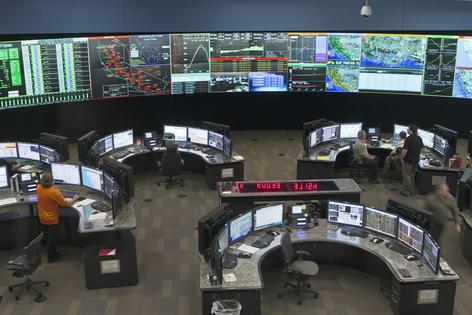What is curtailment? An electricity market expert explains why states sometimes have too much wind or solar power
Published in News & Features
Curtailment has a special meaning in electric power systems. It describes any action that reduces the amount of electricity generated to maintain the balance between supply and demand – which is critical for avoiding blackouts.
Recently, curtailment has made news in states like California and Texas that are adding a lot of wind and solar power. On very windy or sunny days, these sources may produce more electricity than the grid can take. So grid managers reduce production to manage that oversupply.
This can be a lost opportunity. Electricity from solar and wind, as well as existing nuclear plants, is inexpensive and emits less greenhouse gases than fossil fuels, so it may be in society’s interest to keep these generators running.
Consumers know about shortages and surpluses in the goods they buy. Shortages mean that shoppers can’t get that PlayStation 5 for Christmas – or, more critically, the bread, water or baby formula they need.
Surpluses look different, like unsold books classified as remainders or Easter candy discounted 80% at local drug stores on Monday morning.
But electricity is not like these goods. On today’s electric grid, shortages and surpluses can both result in the exact same thing – a blackout.
The North American grid transmits electricity as alternating current that changes direction back and forth, like water ebbing and flowing from a vintage hand pump as the handle is pushed up and down. Modern electricity grids require precise levels of frequency – the back-and-forth motion of power – to function properly.
The grid is designed to function at 60 hertz, which means that the flow of electric current shifts back and forth 60 times per second. This is achieved, in part, by ensuring that the amount of electricity produced at any given time is equal to the amount of electricity being used. If too little electricity is produced, frequency on the system drops. If too much electricity is produced, then frequency increases.
Modern power plants are designed to operate within a relatively narrow range around 60 hertz. If the actual frequency on the grid is outside that range, the plant can disconnect itself from the system. If enough plants do that, it causes a blackout.
In some parts of the U.S., mostly the Southeast and the West, the same companies generate electricity and deliver it to customers. When power plants in a utility’s territory generate more electricity than customers are using, the company will simply produce less electricity from its most expensive power plant, or temporarily shut it off altogether.
...continued








Comments